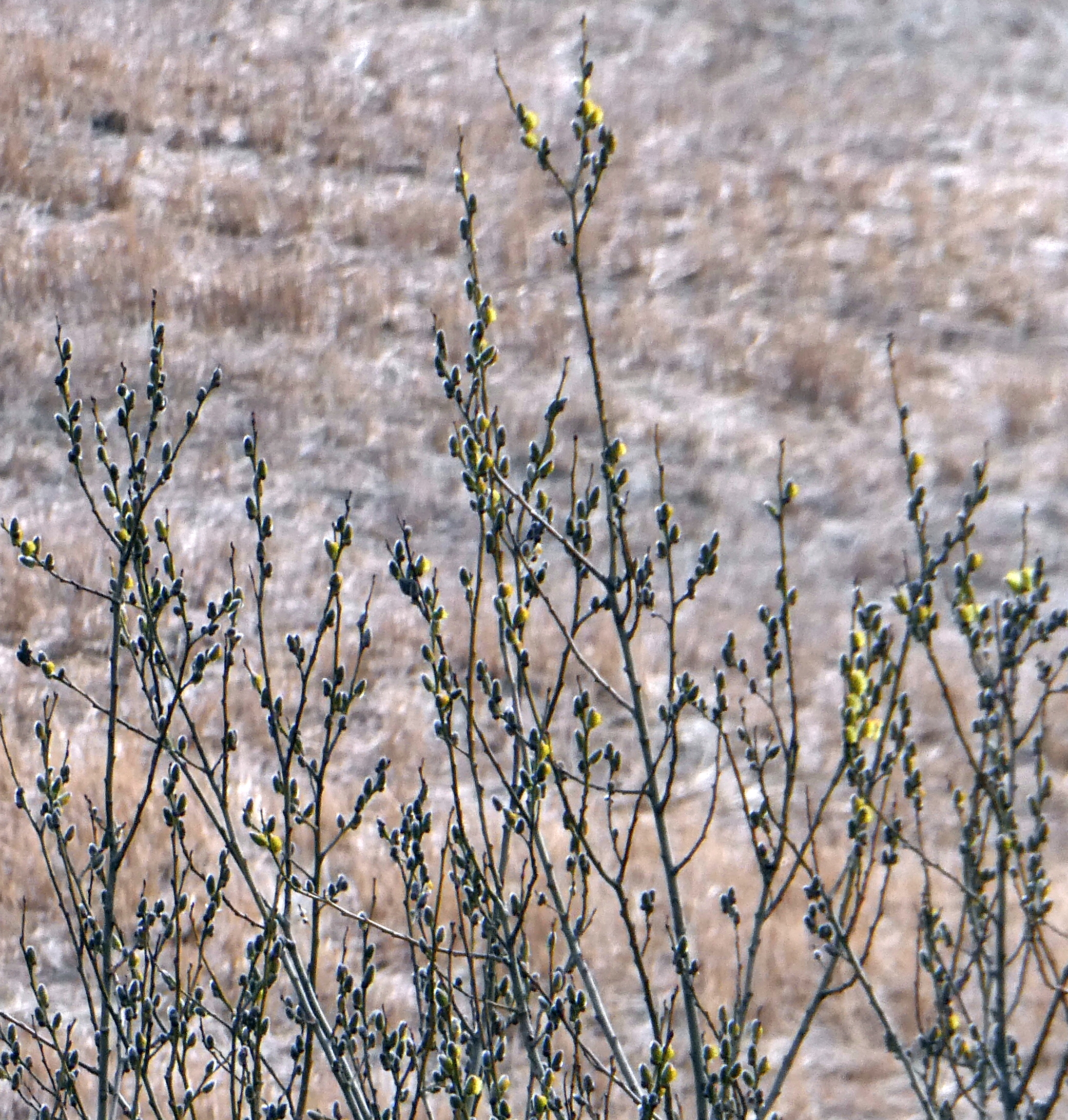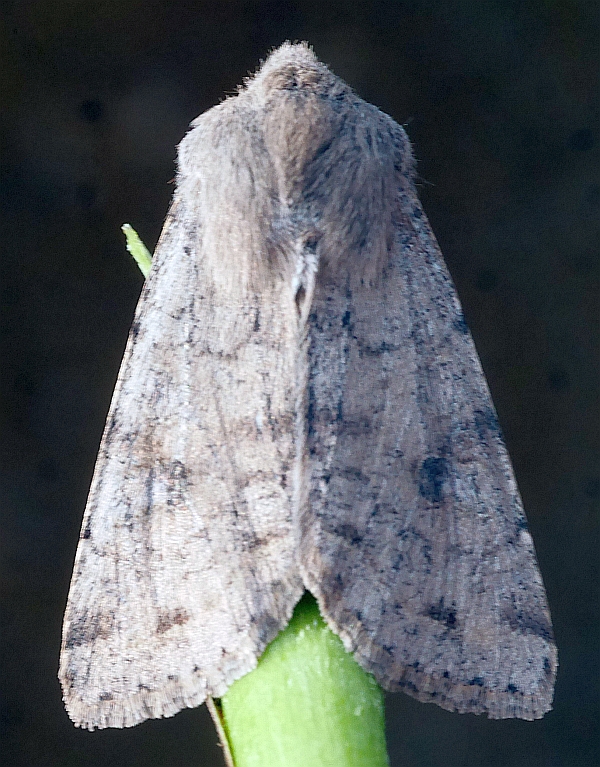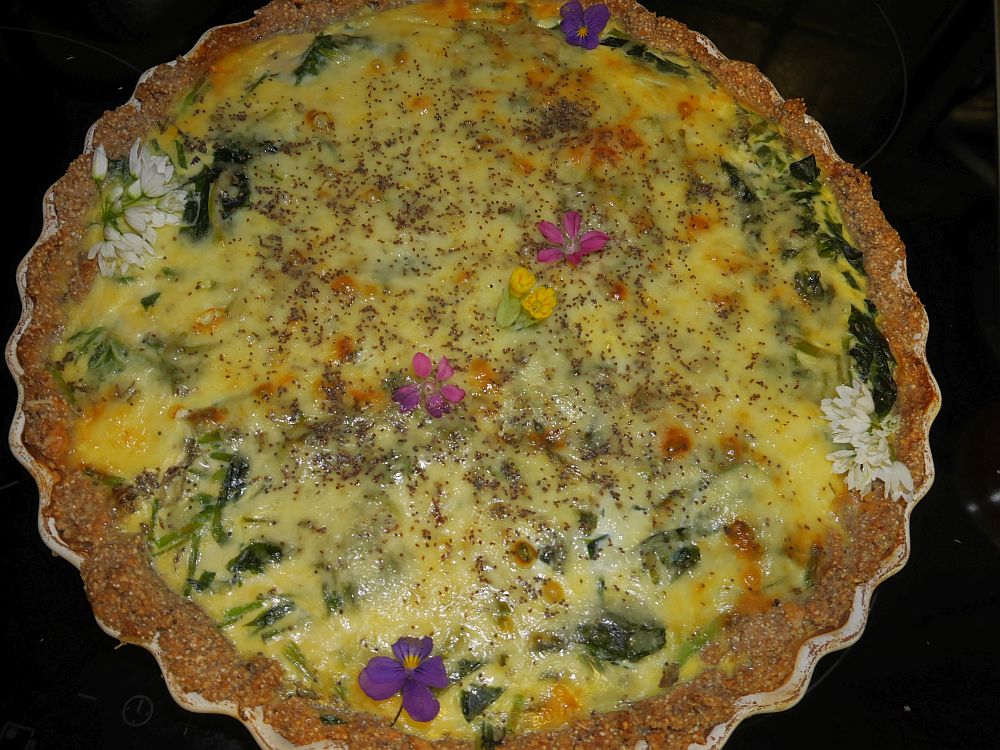In connection with my daughter Hazel’s birthday yesterday, she wanted me to make a salad for her and her friends she’d invited for dinner, so no birthday cake, it was a birthday salad with candle, and 78 ingredients was the plan! 78? Well, it was a double celebration as this week was also 40 years since the titles to my house were signed over to us by the previous owner Ragnhild Austvik. I told Hazel it would be a 78th birthday party and didn’t reveal all until we were at the dinner table! She didn’t guess why, believing I’d miscalculated as the combined age with her brother (his birthday is on Monday) would be 79, although on her birthday it was still 78, so it could have been that! So, here’s the over-the-top flowery salad I put together with ingredients list below the pictures (yes, I miscalculated and it turned out to be more than 78…40 more in fact ;)) 


Ingredients:
FLOWERS
1-3. Dahlia; Georginer (3 varieties)
4-6. Begonia (3 var.)
7. Malva alcea (hollyhock mallow; rosekattost)
8. Althaea officinalis (marshmallow; legestokkrose)
9-11. Raphanus sativus (rasish; reddik) (3 var.)
12. Apium graveolens (celery; seller)
13. Spilanthes oleracea (toothache plant; tannpineplante)
14-17. Lycopersicon esculentus (tomato; tomat) (4 varieties: Tante Cis, Linda Sibirsk, Sjokolade Plummer and German Pink)
18. Oxalis triangularis “Rubra”
19. Impatiens glandulifera (Himalayan balsam; kjempespringfrø)
20. Pelargonium
21. Brassica nigra (black mustard; svart sennep)
22-26. Hemerocallis (day lily; daglilje) (4 varieties / species)
27-28. Allium wallichii (Sherpa onion; Sherpaløk) (2 var.)
29. Sedum
30-32. Hosta (3 var.)
33. Calendula officinalis (marigold; ringblomst)
34. Fedia cornucopiae (African valerian)
35. Fuchsia magellanica
36. Diplotaxis tenuifolia (perennial rocket; flerårig rucola)
37. Oenothera biennis (evening primrose; nattlys)
38-39. Chrysanthemum coronarium (shungiku; kronkrage) (2 var.)
40-41. Mentha sp. (2 var.)
42-45. Allium schoenoprasum (chives; gressløk) (4 var.)
46. Tulbaghia violacea (society garlic)
47. Allium montanostepposum
48. Allium thunbergii
49. Allium cernuum x stellatum “Hammer”
50. Allium fistulosum “Salatniy” (Welsh onion; pipeløk)
51. Allium spirale
52. Allium nutans x senescens
53. Allium suaveolens
54. Allium cyaneum
55. Allium moschatum
56. Allium lusitanicum (German garlic; kantløk)
57. Allium boreale (Arctic chives; sibirgressløk)
58. Taraxacum officinale (dandelion; løvetann)
LEAVES
59. Aegopodium officinale (dandelion; løvetann)
60. Allium x cornutum (St. John’s onion; Johannesløk)
61-62. Allium thunbergia agg. (2 var.)
63. Allium schoenoprasum
64. Allium tuberosum (Chinese chives; kinagressløk)
65. Allium spirale
66. Allium fistulosum “Mysusæter” (roof onion; takløk)
67. Allium nutans x senescens
68. Allium schoenoprasum ssp. sibiricum (Japanese chives; Japangressløk)
69. Allium x proliferum (walking onion; luftløk)
70. Allium fistulosum x pskemense (Wietse’s onion; Wietsesløk)
71. Allium lusitanicum (German garlic; kantløk)
72. Allium hookeri var muliense (yellow Hooker’s onion; Gul Hookersløk)
73. Gynostemma pentaphyllum (sweet tea vine)
74-76. Brassica oleracea (perennial kale; flerårige kål) (3 var.)
77. Oxalis tuberosa (oca; oka)
78. Spilanthes oleracea (toothache plant; tannpineplante)
79. Coriandrum sativum (coriander; coriander)
80. Artemisia dracunculus sativa “German” (German tarragon; tysk estragon)
81. Anethum graveolens (dill)
82. Aegopodium podograria (ground elder; skvallerkål)
83. Stellaria media (chickweed;
84. Lactuca sativa (lettuce; salat)
85-88. Apium graveolens (celery; selleri) (4 var)
89. Oxalis sp.
90. Vitis vinifera (grape vine; drue)
91-94. Pisum sativum (pea; ert) (4 var.)
95. Petroselinum sativum (parsley; persille)
96-97. Cucumis sativus (cucumber; agurk) (2 varieties: Passandra and Epleagurk)
98-99. Brassica rapa (turnip ; nepe) (2 var.)
100. Plectranthus amboinicus (Cuban oregano)
101. Basella rubra
102. Oenanthe javanica (seri)
103. Angelica archangelica “Vossakvann” (Garden angelica; Vossakvann)
104. Brassica oleracea “Ragged Jack kale” (kale; grønnkål)
105. Campanula rapunculoides (creeping bellflower; ugressklokke)
106. Malva moschata (musk mallow; moskuskattost)
107. Sanguisorba minor (salad burnet; pimpernel)
108. Campanula punctata
109. Rumex patientia (patience dock; hagesyre)
110. Rumex scutatus (French sorrel; Fransksyre)
111. Sonchus oleraceus (common sow thistle; haredylle)
112. Nasturtium officinale (watercress; grønn engelskkarse)
113-114. Mentha sp. (mint; mynte)
115. Ribes divaricatum (Worcesterberry; Worcesterbær)
116. Rubus idaeus (raspberry; bringebær)
117. Prunus domestica “Sviskeplomme” (plum; plomme)
118. Ficus carica “Bornholm” (fig; fiken)



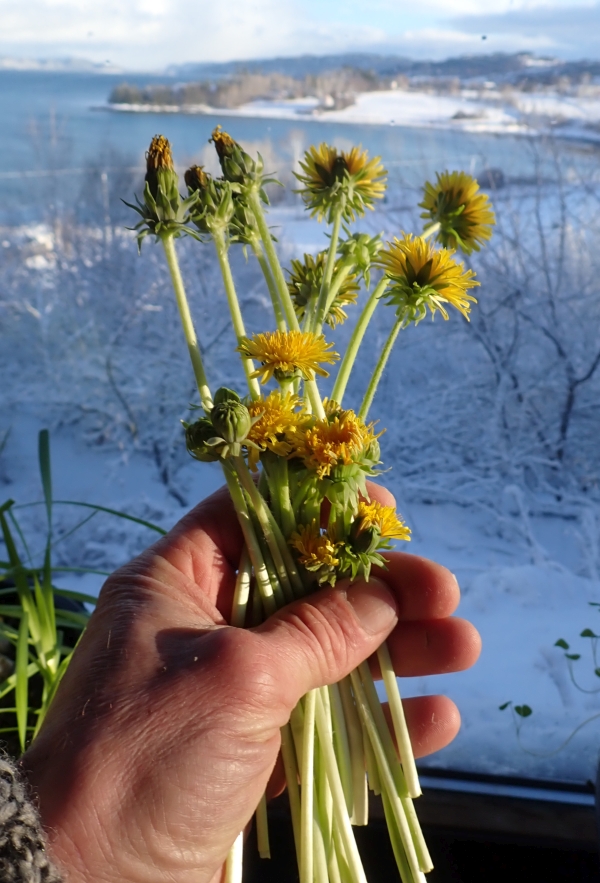

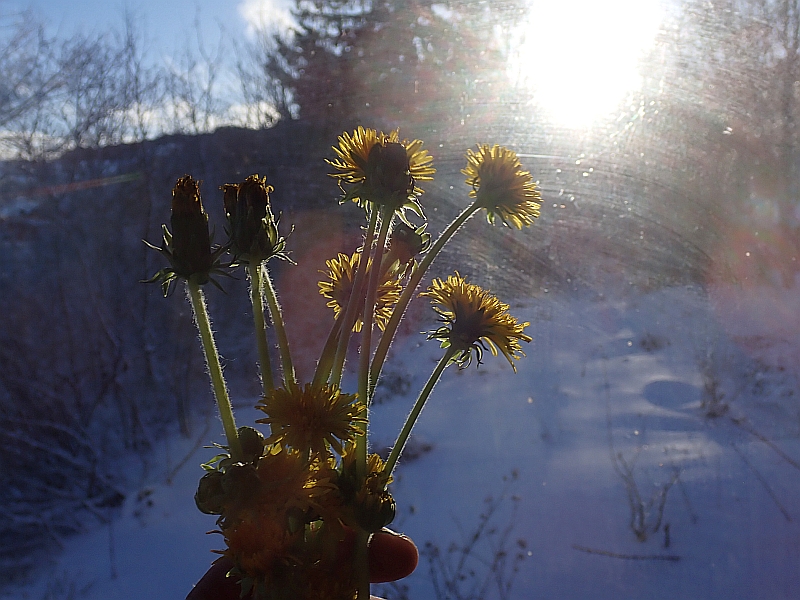


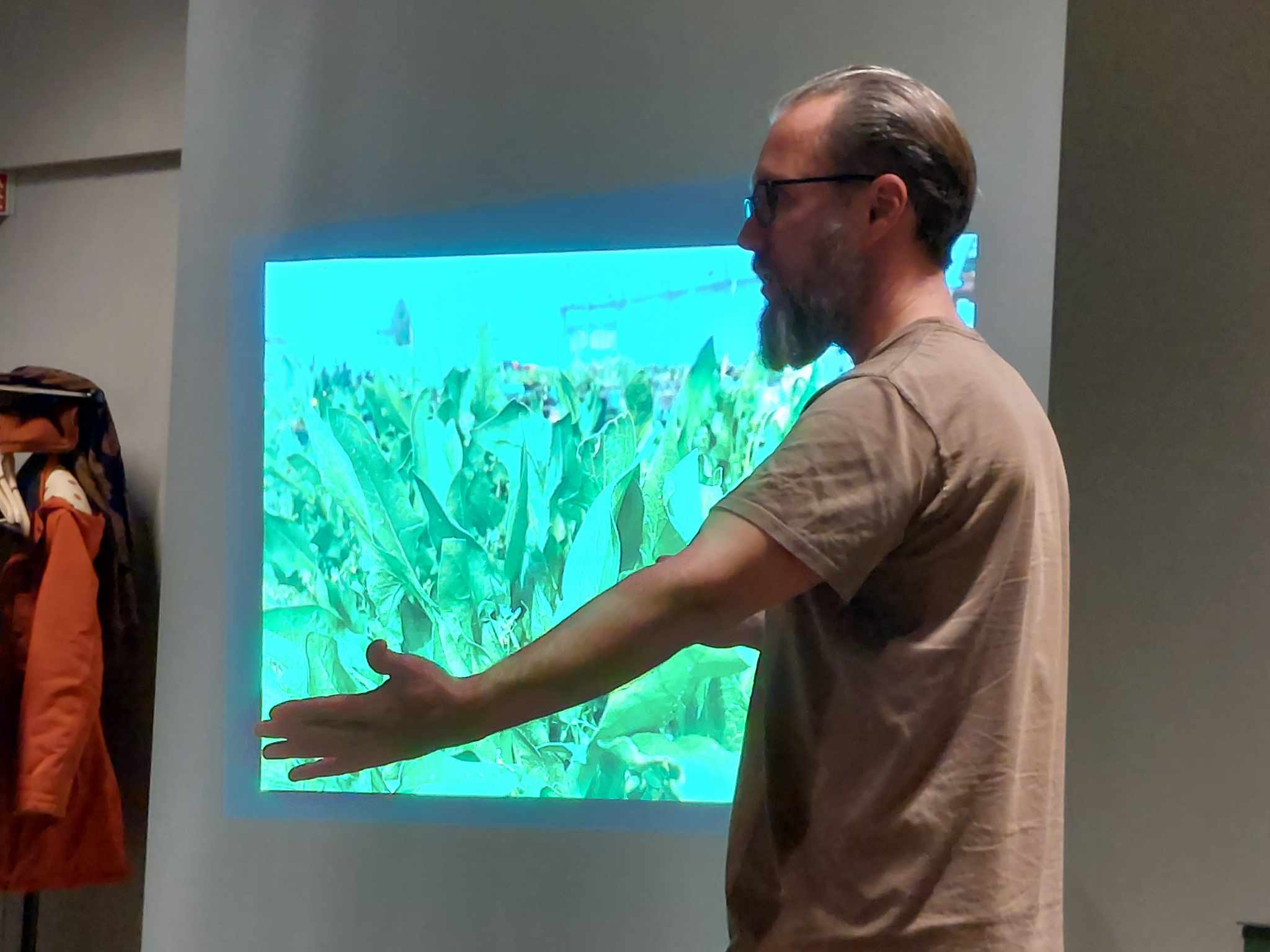
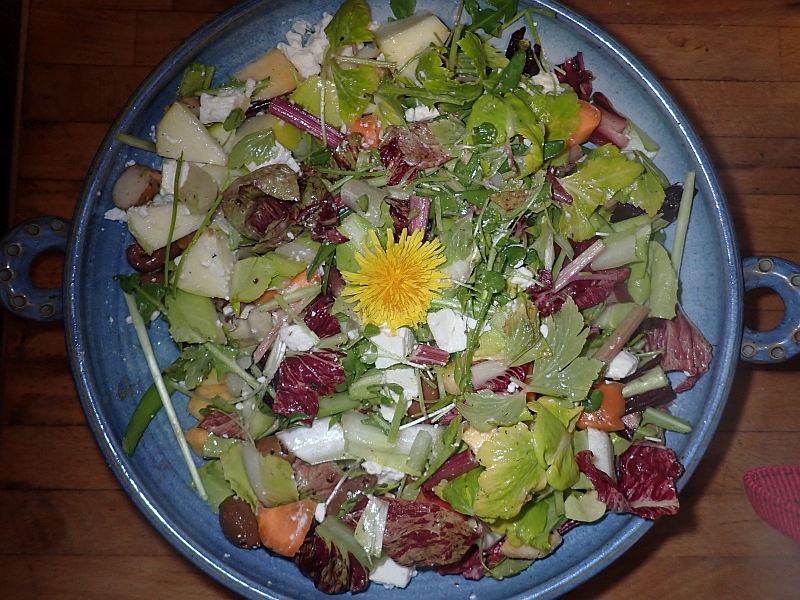
 Salad ingredients: Celery, three chicory varieties, dandelion (including one flower), carrot, Japanese yams, Allium cernuum and Hablitzia (from the garden), Hristo’s onion (Allium flavescens x nutans?), oca (2 varieties), apple (Aroma), horseradish shoots, garlic, chives, wild buckwheat shoots and turnip “Målselvnepe”
Salad ingredients: Celery, three chicory varieties, dandelion (including one flower), carrot, Japanese yams, Allium cernuum and Hablitzia (from the garden), Hristo’s onion (Allium flavescens x nutans?), oca (2 varieties), apple (Aroma), horseradish shoots, garlic, chives, wild buckwheat shoots and turnip “Målselvnepe”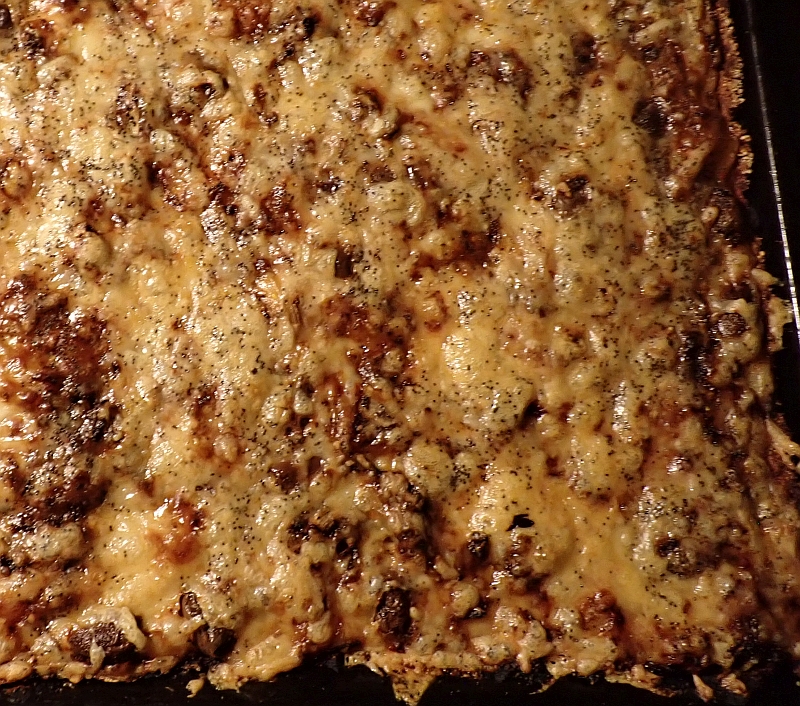
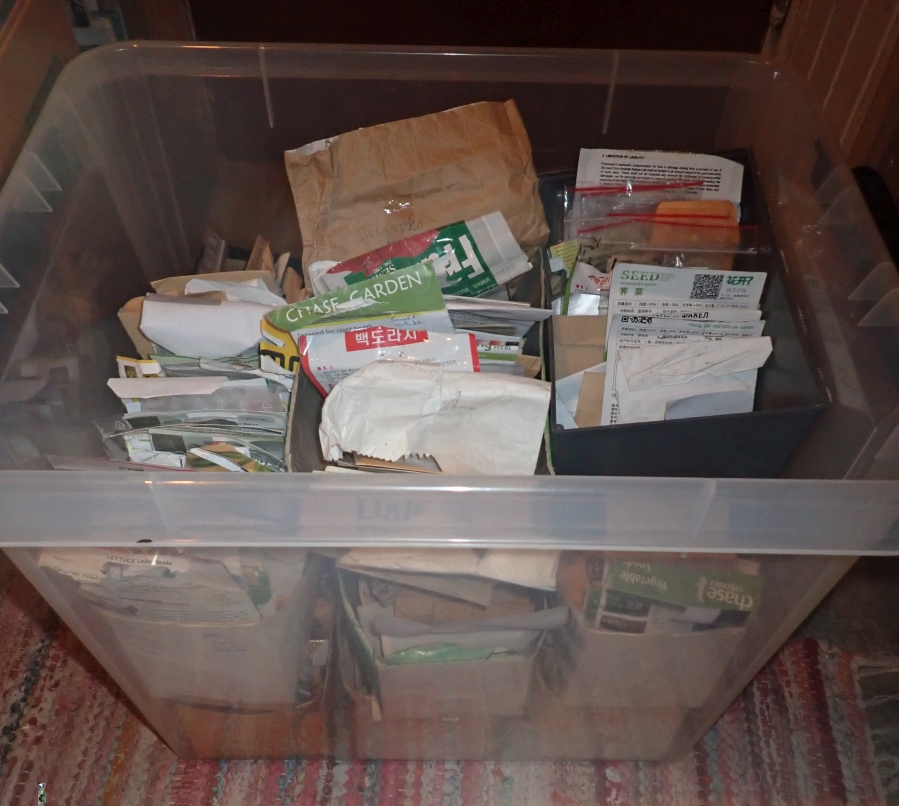
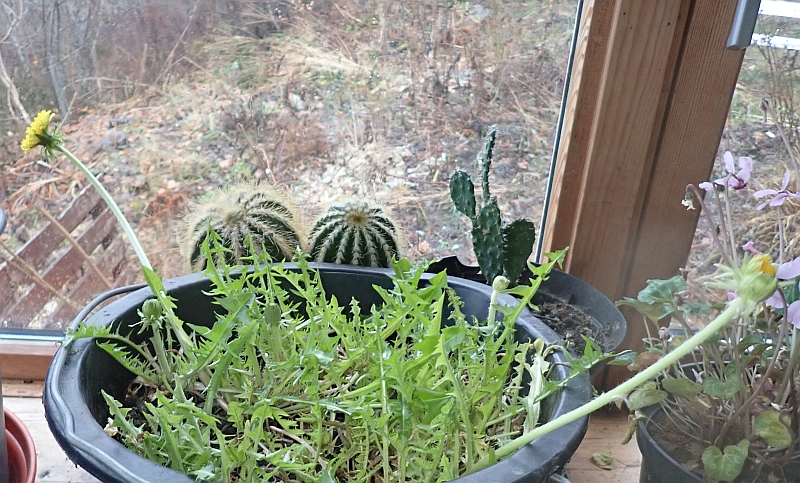
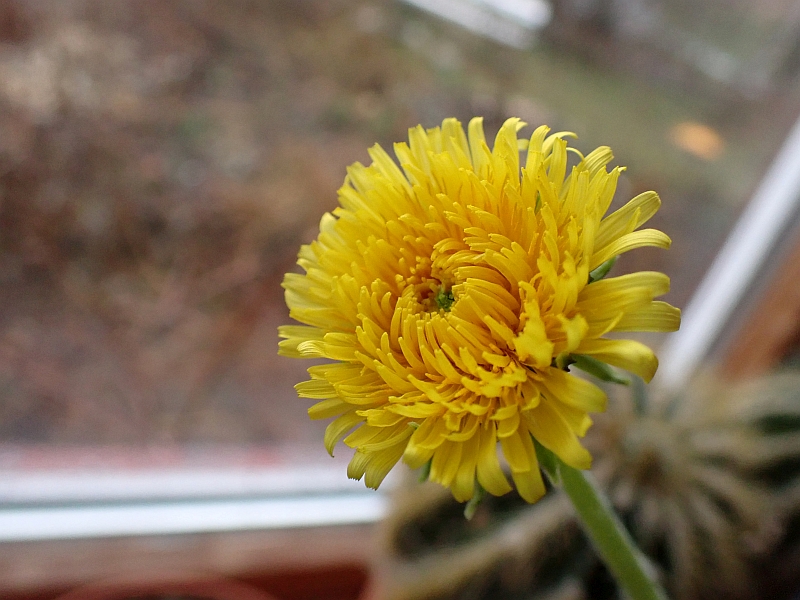
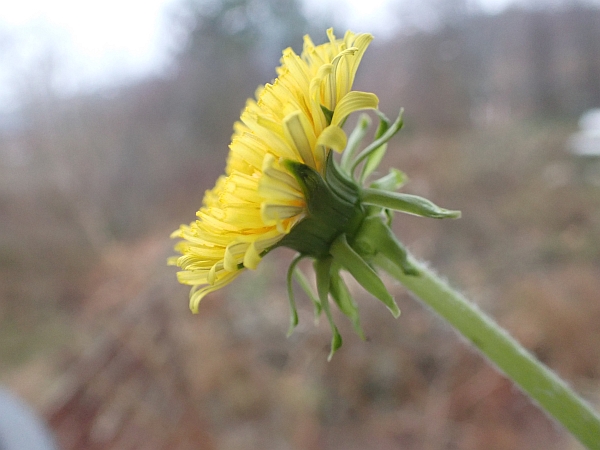 We ate that one yesterday, but there are several more stretching upwards, and the background today is much brighter after a heavy snow fall:
We ate that one yesterday, but there are several more stretching upwards, and the background today is much brighter after a heavy snow fall: …and a bucket of chives can also now be harvested from:
…and a bucket of chives can also now be harvested from:
